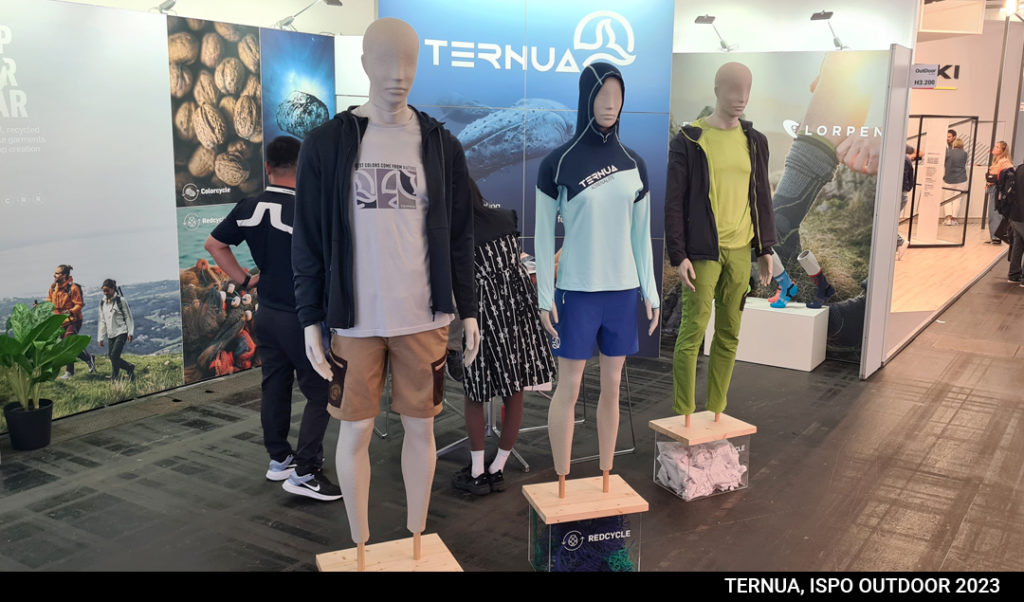The impact of mannequins on purchasing decisions
Although the retail and fashion sector has changed substantially over the centuries, the truth is that it has been affected by several factors that have greatly altered the consumption habits of its public in recent years.
We have already talked about the influence of sustainability on purchasing decisions, which has meant that for the first time in history consumers are beginning to value other things in addition to price and style, and want to know the origin of the raw materials and the processes by which the garment they are buying is made, as well as what actions their brand is taking to reduce its environmental impact.
The other major factor is the digitalisation of consumer habits. A few years ago, trends already showed a high growth of online shopping in the fashion sector, but after the pandemic the growth has been even more pronounced. In Spain alone, almost half of the population has bought fashion online, a share equalled only by the travel sector.
In this scenario, where consumers are increasingly buying from online channels, what is the position of visual merchandising in offline shops, and in particular of mannequins?
Offline shopping has become a more complex and immersive experience
As a start, physical shops still make perfect sense. According to Google, almost 80% of shoppers will go to the shop to buy when they have an item they need or want immediately, and more than 60% of people prefer to shop at brands that have a physical shop rather than online-only ones.
However, one thing is different: Consumers have developed new expectations of what they want to find in a physical shop, they want a whole visual and immersive experience that goes far beyond simply purchasing the garment. An example of this is the growing trend of taking a photo in front of a shop window or with visual elements of the store and sharing it on social media, a trend that many companies and retailers are already taking advantage of to give their brand more visibility.
Thus, we can state that, despite the fact that a high percentage of retail and fashion purchases are made through online channels, physical stores not only remain an essential sales channel, but visual merchandising is becoming increasingly important as an enhancement of the shopping experience, and in omni-channel strategies that merge online and offline actions.
The role of mannequins in new visual merchandising
Visual merchandising continues to affect customers’ purchasing decisions, although it has become a more complex marketing strategy. In the physical point of sale, every detail has been considered, from the window display, the store layout and the placement of the products, to the lighting, colours and decorative elements.
But now all these elements have been taken to a new level. Just look at Berluti’s campaign that creates an aspirational effect with its projections of shadows of Batman and Superman, or the displaying of the Abercrombie & Fitch brand, which wanted to focus on a youthful public, so they were setting their shops with dark touches and dim lights focused on each of the garments.
Visual merchandising no longer puts the garment on centre stage, but wants to create an atmosphere, to make the consumer feel a certain way or to provoke certain sensations. It even plays with experiential or sensory marketing, introducing smells and music to an experience that until now was eminently tactile and visual.
However, the key is often in the details, and here mannequins play an important role. Why are they still important?
- They allow the consumer to better see the garment or accessory they want to buy. In other words, it gives realism to the product; it is not the same to see a garment on a shelf as it is to see it on a mannequin in human form. This point is still essential in the new approach to visual displaying, since at the end of the day we are making the person experience in some way what it would be like to wear the piece.
- We can go further: Inspiration and style. If we show not just one piece of clothing or accessory, but a whole outfit or possible combinations, we are contributing to create an aspirational effect, and we help with the purchase decision. Consumers can even imagine what it would be like to wear the clothes in their everyday life.
- They reinforce brand values: The colour, texture and shape of the mannequins help to reinforce the brand image. In addition, in the case of sustainable mannequins, such as our paper paste mannequins, they also convey values such as sustainability.

Digital channels are gaining ground, and physical shops have had to reinvent themselves, so that visual merchandising, instead of becoming obsolete, has gained even more strength in point-of-sale marketing strategies. And what is the first thing consumers see along with clothing or accessories? That’s right, mannequins!







